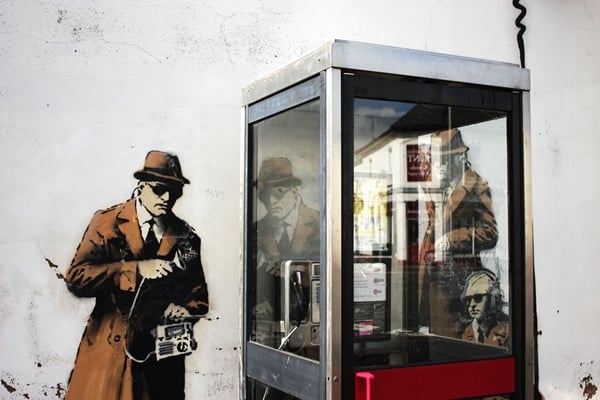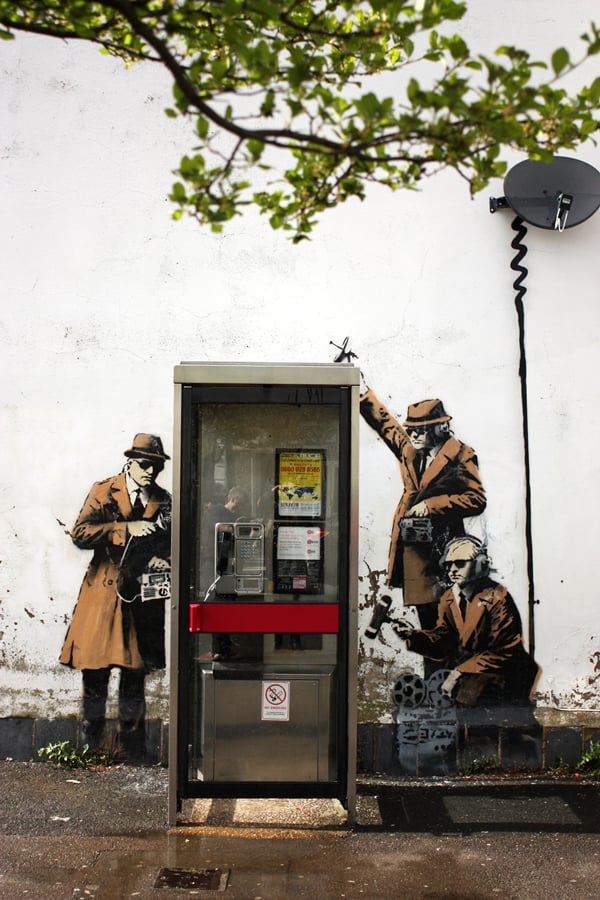Auctions
Does Banksy’s ‘Spy Booth’ Belong to the Government?
British surveyor hatches plan to rescue £1 million mural from the auction block.

British surveyor hatches plan to rescue £1 million mural from the auction block.

The British government may be the rightful owners of Banksy‘s Spy Booth, a stenciled mural that depicts government spies listening in to conversations in an adjacent phone booth, reports the BBC. The landlord of the building on which the mural is painted is trying to sell the work.
Phil Jones, a retired surveyor who has been campaigning to prevent the piece’s sale, claims that the Department for Transport is its real owner. He makes the case that the wall in question used to be the internal wall of a house that was seized by the government around 1960.
“It was a house previously acquired circa 1960, which was knocked down for road improvements,” Jones told the BBC. “The government should acknowledge that they own it and that it’s in the public realm for the benefit of the people of Cheltenham.”
Much of the cheeky painting’s appeal lies in the fact that Cheltenham is located only three miles from GCHQ, the British intelligence headquarters. The mural was painted in mid-April (as reported by artnet News), around the same time that the artist announced the piece Mobile Lovers on his website.
Unlike the latter piece, which later became a source of controversy when the leader of a struggling local boys club attempted to sell it to save the organization—until Banksy gave the club his blessing (see artnet News story)—Spy Booth was not acknowledged by its creator until nearly two months after its creation (see artnet News report).

Banksy mural in Cheltenham.
Photo: lamentables/Flickr.
Shortly thereafter, the owner of the building on which the artwork appeared made arrangements to sell the work at auction, where it could potentially fetch as much as £1 million ($1.7 million). When residents noticed scaffolding going up around the phone booth and mural, they raised the alarm, mobilizing to keep the work in situ (see artnet News article). A fundraising campaign to buy the artwork fell short, but the international attention ultimately had the desired effect.
Although the claims of government ownership are new, Cheltenham leaders have already weighed in on the case. As reported by artnet News, the local council was able to halt the removal of the mural thanks to the building’s designation as a Grade II listed house, protected under British heritage legislation.
Roger Wilson, the home’s owner, is expected to fight the building’s protected status. According to the BBC, he will seek legal advice regarding the ownership of the wall.